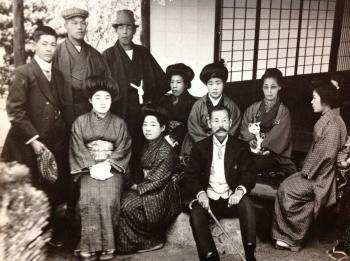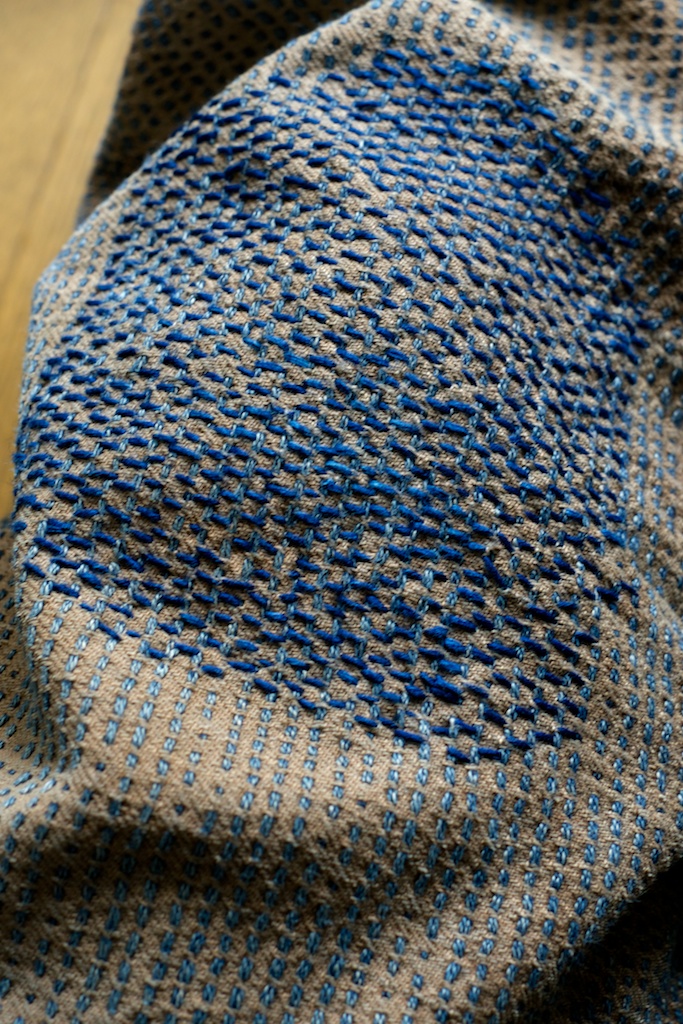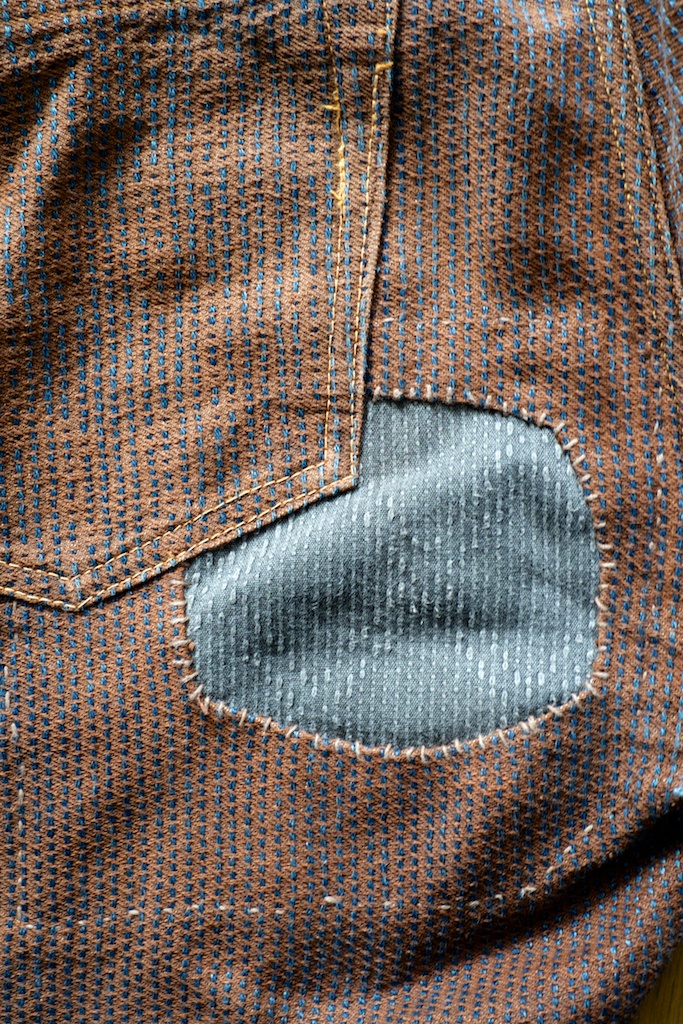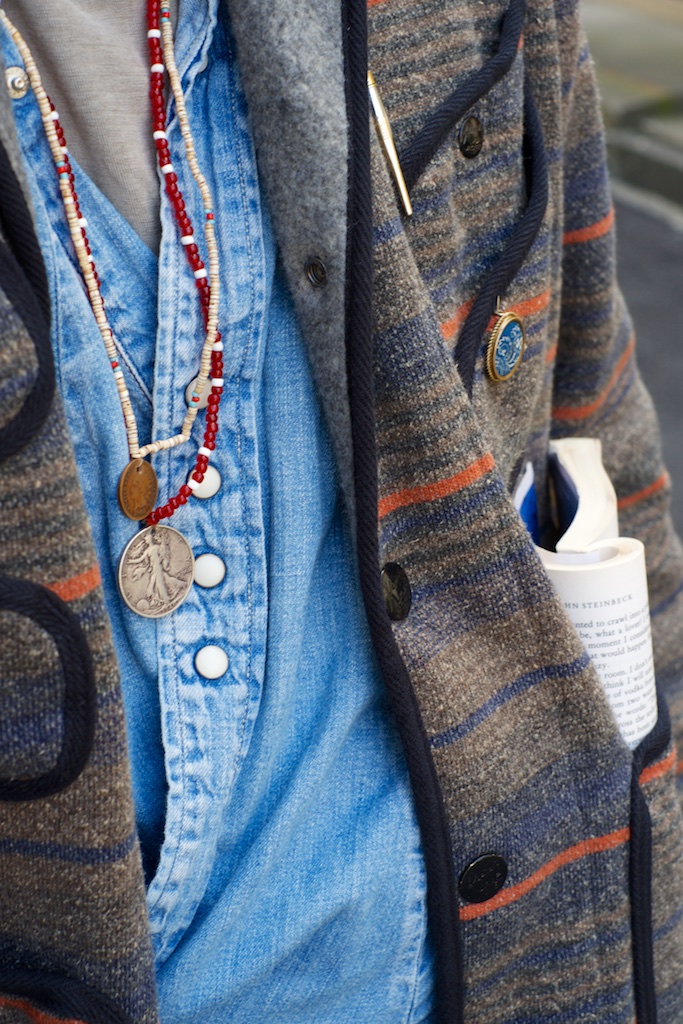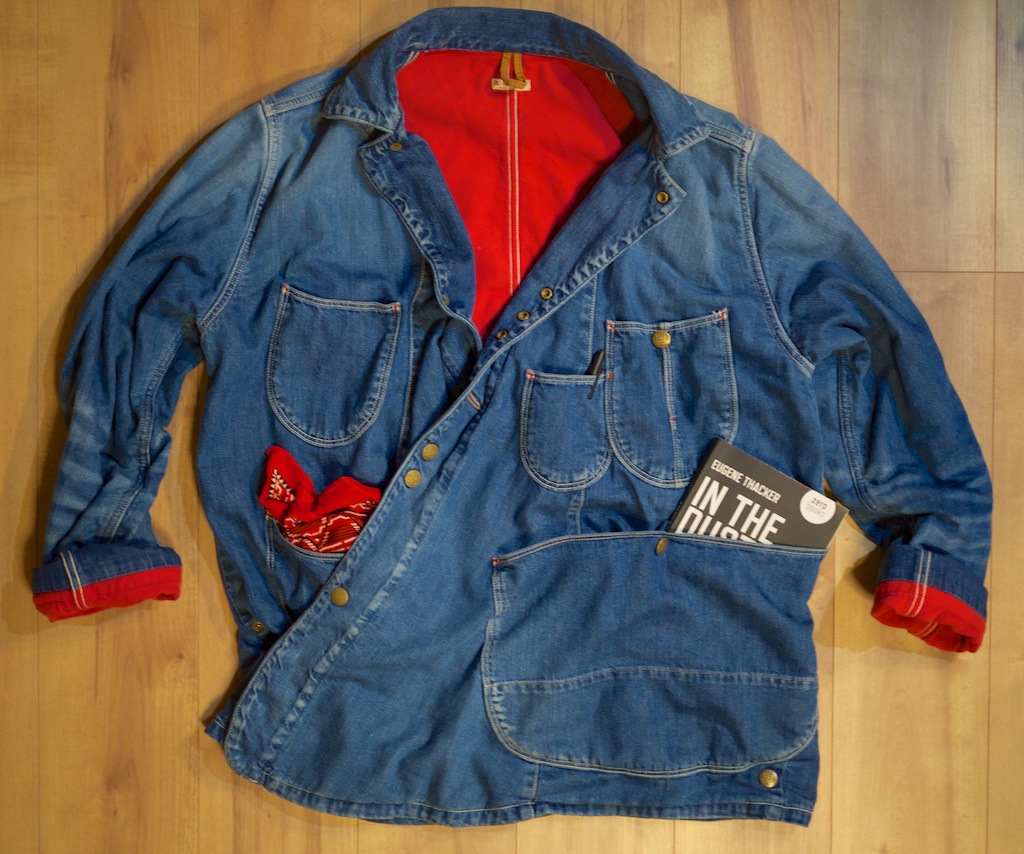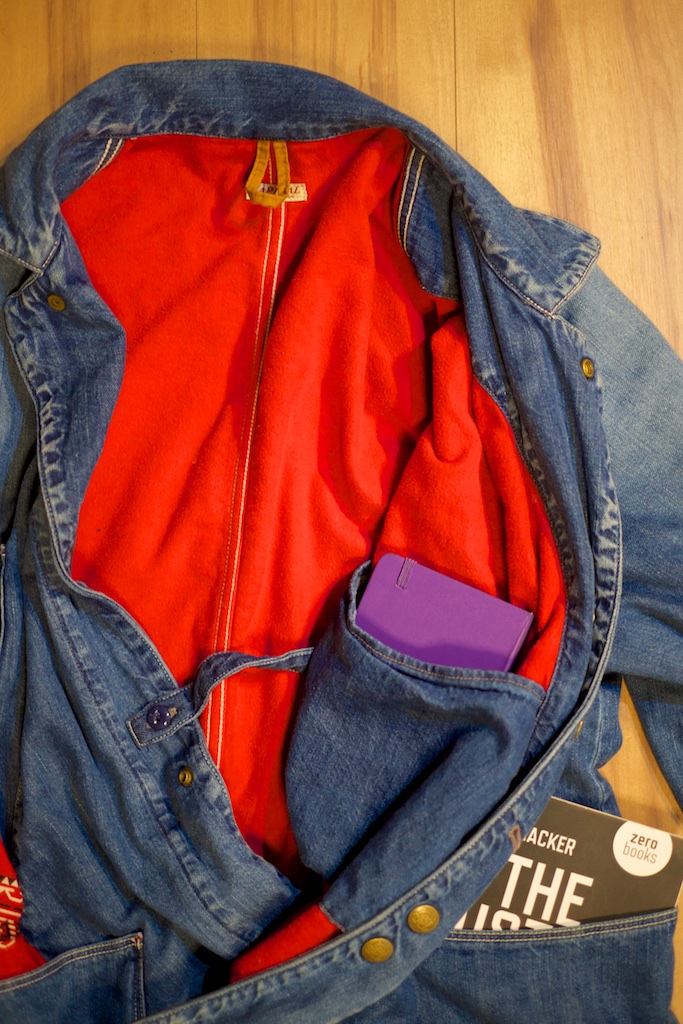和洋折衷 "Wayousechu" Blending Japan and The West
The melding of two-forms is at most times fraught with difficulty. The merging of eastern and western thought, design, culture, philosophy etc, is usually regarded with sighs. It is not a difficult thing to achieve; there needs to be a careful balance to make it beautiful. Wayousechu is a Japanese term for the cohesion of east and west. This term is usually used in architecture but I will loosely apply the term to textile and fashion in this case. Because the term is a more modern term and solely an aesthetic term, it can be applied to objects and ideas outside of architecture. One of the earliest examples is Ryoma Sakamoto wearing boots.

Later on during the Meiji Era western clothing becomes quite common place, often mixed with kimono and Japanese clothing.
In fashion the wayousechu aesthetic would be used as a word to explain design concepts. Kapital has been playing with wayousechu in their collections for years. Some good recent examples are Century Denim, and the Suki-yaki western shirt.
The suki-yaki western shirt is a partially modified pattern, based on an over-sized denim western shirt. The collar and base garment is the familiar western shirt (pearl snaps, shoulder details etc...) but the distinct left-over-right method of wearing is hinting at kimono. The two bottom snaps create a sort of obi (belt sash) effect that loosely gathers at the waist line. It helps to hide the gut...
Century denim is maybe seen as a more obvious mix, but I feel it holds a more subtle suggestion of east and west. Take for instance the colors. Two traditional Japanese workwear colors of kakishibu (brown) and sumi (grey), accented with the sashiko stitches in the traditional indigo color. The sashiko not only functions to strengthen the fabric it also is integral to the color. As the indigo fades the base denim colors come out stronger. With the kakishibu (5S) version this effects the brown color slightly and creates a more reddish and warm tone. Coating these jeans with kakishibu liquid will strengthen the fabric weave and protect the fibers slightly. This was a technique used in sake brewing to lengthen the life of sakabukuro (sake mash bag).
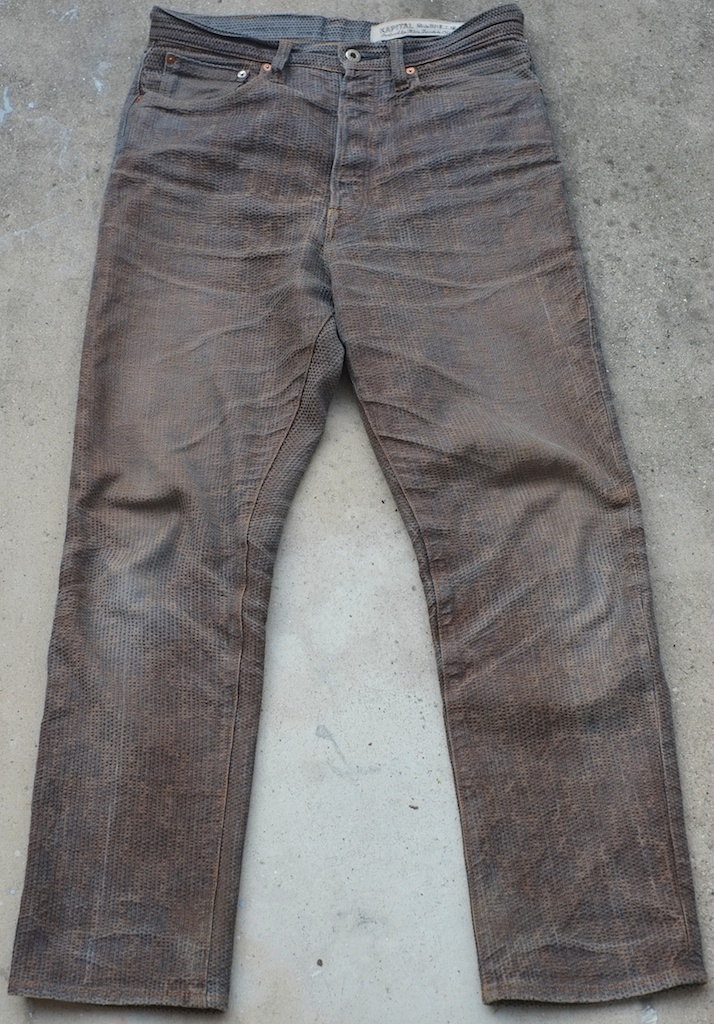
The newest addition to the East meets West project for Kapital is the Suki-Yaki Coverall. Essentially the familiar chore jacket, but modified for function and aesthetic. The pocket layout is extremely useful. The denim is a light ounce with a soft blue color. The red flannel lining contrasts nicely and is similar to those used in Lee work jackets. There is a very similar shape to the Suki-Yaki western shirt but the coverall is more like a noragi in that it is square in shape.
It is important to note that there is a very careful design involved. The shape is clearly Japanese with the left-over-right layout but the garments still function like western workwear. This is a step in a new direction of workwear as fashion. The workwear function and construction details are present but with an interesting side step in pattern-making and silhouette. The boxy relaxed fit of the Suki-Yaki coverall and western shirt is easily coordinated with loose or slim fitting pants. The belt loops on the side add a multitude of belt arrangements. Possibly tying obijime or a braided belt around the waist would create an interesting military jacket type fit.
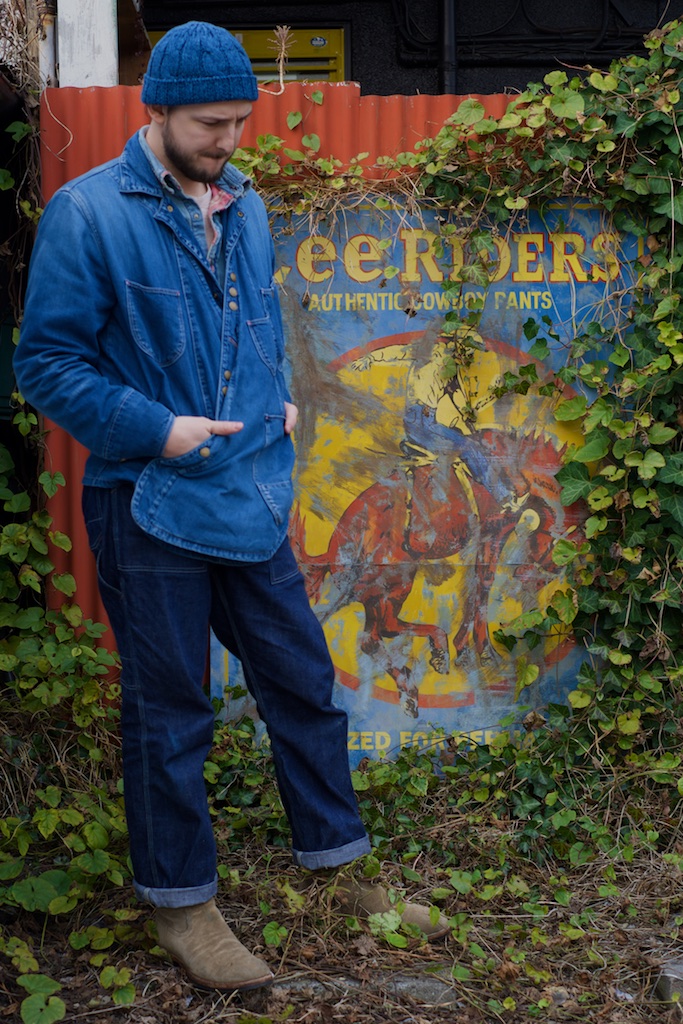
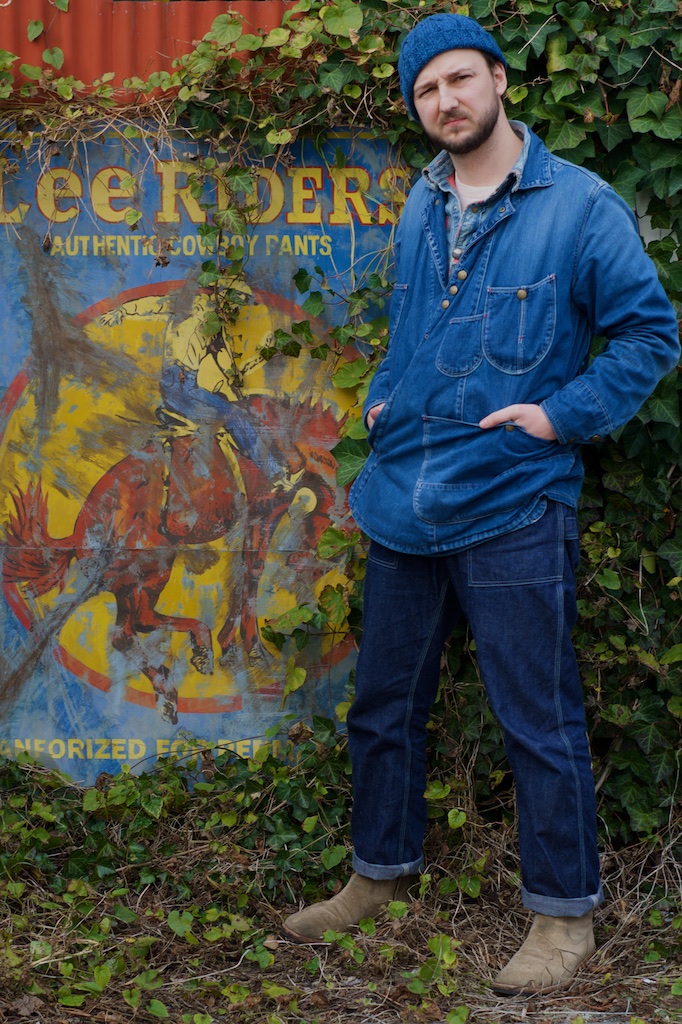
Wayousechu is something that has been around for a long time but slowly being revived. Maybe it is the dramatic increase in interest of Japanese products over the last decade but it may be that finally people outside of Japan are slowly accepting and appreciating the empty clean lines of Japanese traditional clothing (design) and/or the high quality construction of workwear. Maybe even fashion-minded people are willing to try new avenues with familiar fabrics. This is a very interesting development either way and I fully embrace it.


